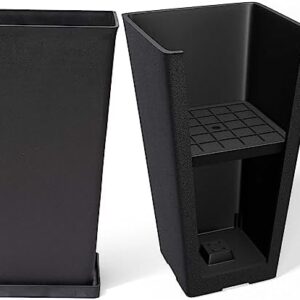So you want to learn more about plant propagation? Well, you’ve come to the right place! Plant propagation is the process of creating new plants from existing ones, and it’s an essential skill for any gardener or plant lover to have. But before you go sticking cuttings in soil or planting seeds willy-nilly, it’s important to understand the science behind successful plant propagation.
At its core, plant propagation is all about reproduction. Plants are able to reproduce in several ways, including seeds, cuttings, division, and grafting. Each method has its own benefits and challenges, but they all rely on the same basic biological processes.
Let’s start with seeds. Seeds are essentially plant embryos, encased in a protective shell. When the conditions are right – enough water, sunlight, and warmth – the seed will germinate, or sprout, and begin to grow into a new plant. Seeds are a great way to propagate plants because they contain all the genetic information needed to create a new plant. However, not all plants produce viable seeds, and some seeds may take a long time to germinate or require specific conditions to sprout.
Cuttings are another common method of plant propagation. Cuttings are pieces of plant tissue – usually stems or leaves – that are taken from a parent plant and encouraged to root and grow into a new plant. This method is often used for plants that do not produce viable seeds, or when you want to create identical copies of a specific plant. When you take a cutting, you are essentially tricking the plant into thinking it’s been injured, which stimulates the growth of roots. With the right care and conditions, the cutting will develop roots and eventually grow into a new plant.
Division is a method of plant propagation that is used for plants that grow in clumps or have underground tubers or rhizomes. With division, you separate a portion of the plant from the parent plant and replant it elsewhere. This method allows you to quickly and easily create new plants that are genetically identical to the parent plant. Division is a great way to propagate plants that are overcrowded or need to be rejuvenated.
Grafting is a more advanced form of plant propagation that involves joining two different plants together to create a new plant. Grafting is often used to combine the desirable traits of two different plants, such as disease resistance or a specific flower color. Grafting requires skill and precision, as the two plants must be carefully cut and joined together so that they grow into a single, healthy plant. While grafting can be more challenging than other methods of plant propagation, it can also produce some truly unique and beautiful plants.
Now that you have a basic understanding of the different methods of plant propagation, let’s dive into the science behind successful propagation. One key factor to successful plant propagation is hormones. Plants produce a variety of hormones that regulate their growth and development, including auxins, cytokinins, and gibberellins. These hormones play a crucial role in stimulating root and shoot growth in cuttings, promoting seed germination, and controlling the development of flowers and fruit.
Auxins are a group of hormones that are responsible for promoting root growth in cuttings. When you take a cutting, applying a rooting hormone that contains auxins can help stimulate the growth of roots and increase the chances of successful propagation. Cytokinins, on the other hand, promote cell division and shoot growth. By balancing the levels of auxins and cytokinins, you can encourage the development of both roots and shoots in your propagated plants.
Gibberellins are another group of hormones that play a crucial role in plant propagation. Gibberellins promote seed germination and stem elongation, helping plants grow quickly and reach maturity. By understanding how these hormones work and how to manipulate them, you can improve your success rate with plant propagation.
In addition to hormones, environmental factors also play a key role in successful plant propagation. Temperature, humidity, light, and water all affect the growth and development of plants, and it’s important to provide the right conditions for your propagated plants to thrive. For example, most plants prefer warm, humid conditions for root growth, while too much light can cause cuttings to dry out and fail to root.
Proper care and maintenance are also essential for successful plant propagation. Once you’ve taken a cutting or sown seeds, it’s important to provide the right amount of water, light, and nutrients to help your plants grow strong and healthy. Regular monitoring and adjustments to the growing conditions will ensure that your propagated plants have the best chance of success.
So, whether you’re a seasoned gardener looking to expand your plant collection or a novice plant lover eager to try your hand at propagation, understanding the science behind successful plant propagation is key to your success. By mastering the basics of plant reproduction, hormones, environmental factors, and proper care, you can create new plants with confidence and enjoy the satisfaction of watching them grow and flourish. Happy propagating!






